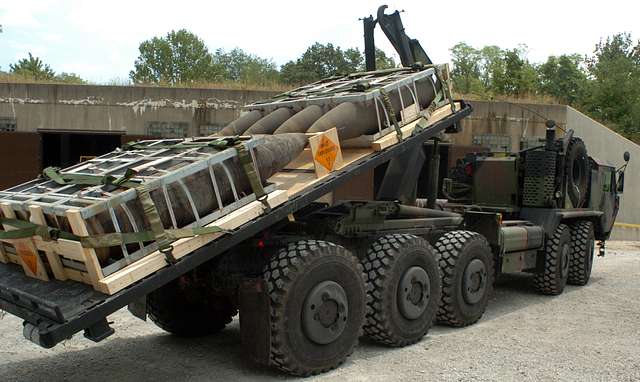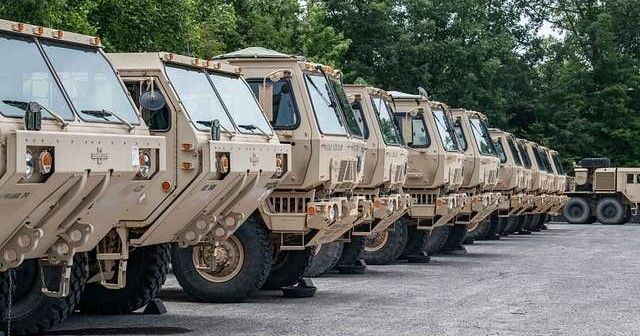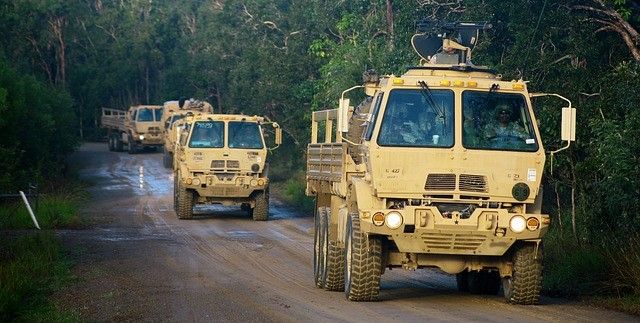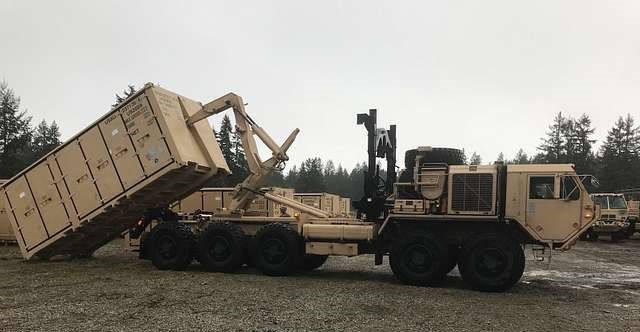US Army Pushes Development of Autonomous Logistics Vehicles
AI coming to US troops as self-driving, self-thinking ground drones set to supply the frontline in any future war.

Following intelligence reports on the deployment of uncrewed ground drones by Russian forces, America’s military chiefs are refocusing efforts on achieving a technological advantage by investing in what the US Defense Innovation Unit describes as “heavy-duty vehicles capable of independently navigating rugged terrain and restocking soldiers in the field.”
While the timing may be a coincidence, the advances that flying and floating drones have made and how indispensable they have become to both defensive and offensive operations is making the development of ground drones a new priority for all modern armies.

The US Army has now underlined this urgency by announcing the selection of three companies to develop autonomous drones with logistics capabilities.
As the defence industry journal C4isrNet reports, “Neya Systems, Robotic Research Autonomous Industries and Carnegie Robotics bested dozens of other contenders to conduct autonomy prototyping for the Ground Expeditionary Autonomous Retrofit System project, or GEARS.”
The most notable part of the investment is not that it will create new vehicles for logistics purposes, but that the vehicles will work without human intervention.
“The name of the game of this is to field autonomy,” observes Neya’s Kurt Bruck.

The move is part of a wide-ranging goal to integrate AI, autonomous vehicles, computer vision, and related fields into more levels of military operations, such as tactical decision making, route planning, troop vehicle movement, target selection, and more.
This is because robots, autonomous drones, and other innovative equipment can operate in places deemed too dangerous for humans or in climate conditions where humans struggle to survive, let alone fight. Autonomous drone vehicles can therefore reduce risk to life while providing more firepower on the battlefield.
AI can also think quicker and more clearly in combat situations and manage much larger data sets than a human.

Specifically for this investment, the Army and DIU are looking to current industry professionals to integrate autonomy into the Palletized Load System, a well-liked logistics and goods truck manufactured by Oshkosh. By doing this, supply flows will be streamlined, and troop safety will be maintained.
“Convoys are one of the hottest targets of an enemy. If you can take out a convoy, you can do a major disruption of a resupply mission,” Bruck said. “Driving these vehicles is one of the most dangerous jobs in the DoD right now. If we can make them autonomous, we’ll get the soldiers out of harm’s way, but also we’re able to increase uptime. Soldiers have to sleep.”
The war in Ukraine provided a perfect example of how logistics and extreme conditions limit the ability of current armies to fight. Long traffic jams of support vehicles made for easy targets during the opening days of the war, with truck columns sitting ducks for ambushes from overhead drones or hidden soldiers with portable anti-armour weapons.

With the US Army likely to hold the advantage in terms of fire support and technology in any future war, even against the Russian or Chinese military, Pentagon thinking is that the enemy will focus their attacks on logistics support to deprive frontline US troops of food and ammunition.
“In the global war on terror, for the last 20 years, a combat logistics patrol could be a 15-vehicle, 20-vehicle convoy with security, and that is a large, slow, soft, moving target,” explains Phil Cotter, a spokesperson for Robotic Research, a company that specialises in the development of autonomous military vehicles.
“In the next fight against an adversary that has long-range precision fires capability and advanced target identification and recognition capability,” he adds, “we’re going to have to fight in a more dispersed and distributed manner.”
Each selected company now has to develop a prototype which the army will continuously assess throughout 2024. Then one company will be chosen to create forty-one further prototypes which will be sent on operations for ‘real-world’ evaluation and soldier feedback.
These are exciting times for anyone involved in ground drone design and the application of AI into modern machinery. A sense that this is the start of something new and ground-breaking, like the development of the tank or aircraft carrier was during the last century.
As Carnegie’s Eric Soderberg explains, “We’re ready to go. They’ve given us a pretty tight timeline. We have familiarity with, of course, all the sensors, and we’ve done similar automation projects. Really, it comes down to pulling those together to make this particular project work the way the Army wants it.”
Photo credit: ojosujono96 on Freepik, Picryl, Nara, Military Material from Pixabay, & Picryl

